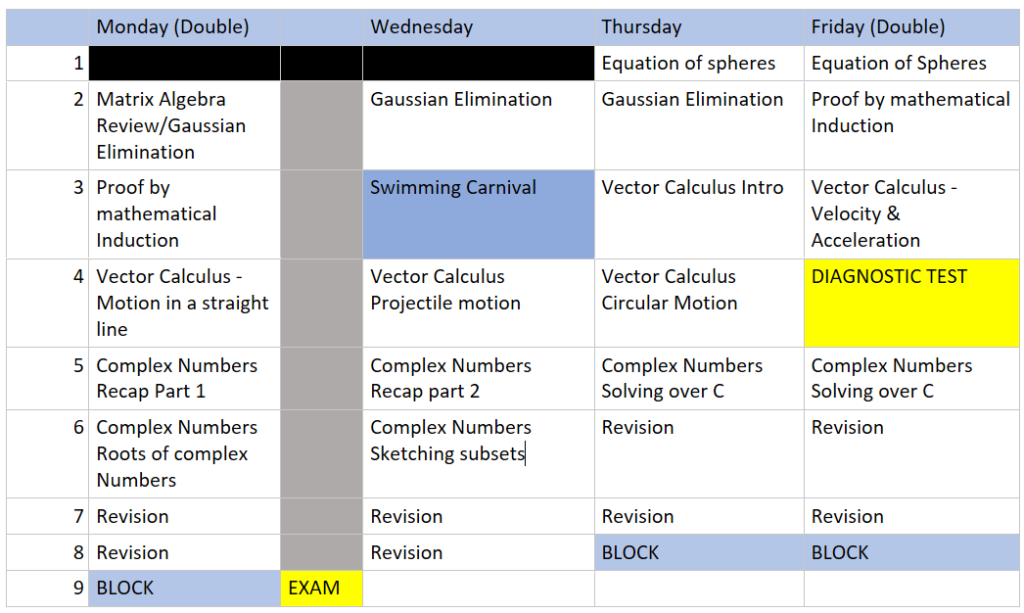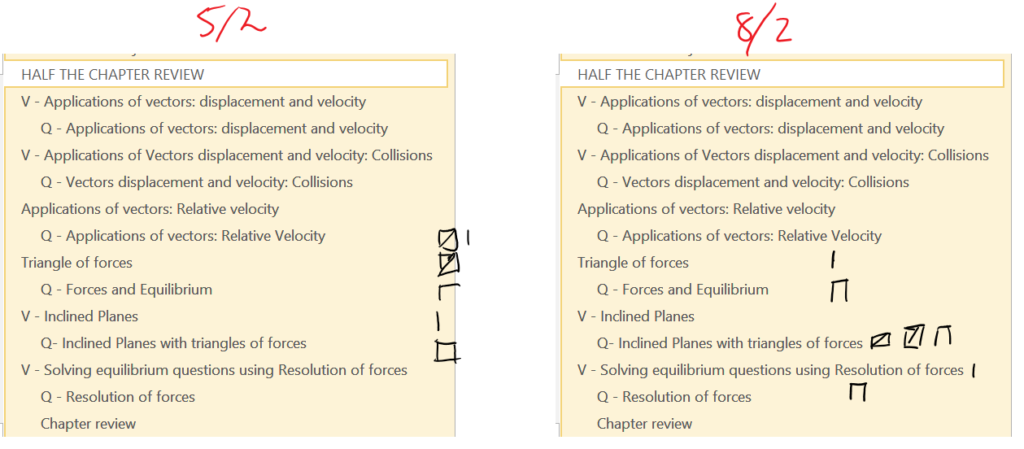My teaching practise has grown and evolved over time. Evolution is hard to spot while it’s happening. It’s not until you see what used to be a fish now walking on land that you realise how much has changed.
So here’s a kind of document of what is happening in my maths classroom right now in 2021. A measure of how much its changed, and a time capsule for future reference.
Students walk into the classroom in their own time and we greet each other. They sit down, open their exercise book and laptop and start learning.
I do not address the class as a whole at the beginning of a lesson. There is nothing for me to say.
Students open OneNote and pick up where they left off. The OneNote list of pages look something like this.

“V” stands for video.

“Q” stands for Questions. (Questions could be exercises, applets, conversations with me or some small group activity)

Students work their way down the list, watching videos when they need to learn something new, then moving on to the questions to apply what they’ve learned.
Just as I see that students have opened their books, I walk over to them and look at their book. Students find this very odd and a little confronting when they first have me as a teacher. This level of close scrutiny in the beginning minutes of a lessons is strange to them. But I assure them early on that seeing what they’ve learnt is kind of my job. I do a few things during this first classroom lap:
I ask if they have any questions. If it’s a short one, I answer then. If it’s a longer one, I promise to come back after my first lap of the class.
I look at their book to see if they did homework. The homework they chose to do (what & how much) is entirely up to them. All I ask is that they do some homework each night after class. I know whether they did homework or not, because I used a date stamp to stamp under their previous days work at the end of the lesson. If there’s no work under the stamp then they didn’t do any homework.

Students have the right to choose not to do homework in my class. If they do make that choice I just ask that they tell me the day before, or email me the night of. No need for explanations, just a quick email saying “Sorry Mr S, I can’t do any homework tonight”. If you arrive to school with no homework & you didn’t send me an email, then that gets written in my little book. Three of those, and we hang out for a bit at lunchtime together.
So, everybody is moving at their own pace, choosing to do homework or not. This sounds like chaos. Luckily there are some guard rails. Something that looks a bit like this is always present in the OneNote somewhere.

This is a ROUGH guide of where a student should be up to. Periodically I’ll flash this up on the big screen and put a big circle around the current day. “Are you on schedule, a bit ahead, or a bit behind?”. Occasionally I realise the schedule is far too optimistic and I tell me students such and cut and paste things, move things around.
Some students prefer to move faster through the content, giving themselves plenty of time to revise at the end. Others move much more slowly, giving themselves less revision time. Others have musicals, or sporting commitments, or assignments in other subjects which mean that their progress is slow in week 3, but they know they’ll catch up in week 4 when they have more time.
A couple of times a week I also do a quick lap of the classroom, laptop in hand, and create a class visualisation that looks like this.

Interpretation: on the 5/2, six students were working on relative velocity while four students where all the way up to Inclined Planes with Triangle of Forces. By the 8/2, you can see that the students have migrated their way down the list. This visualisation is made public on the OneNote so students know where they are up to in relation to the rest of the class. This is a kind of low-level peer pressure to ensure you’re staying with the pack, or at least have a plan to get to the pack.
All the while, I move around the classroom, answering questions, having conversations, setting up small impromptu groups to run through a question on the board together. This might sound like chaos but it very much is not. I know what every student is doing, where they are up to and how much they are understanding. This is something I never managed to achieve when I taught in a more traditional manner.
And my students. They are in control of their own destiny. They know why I run my classroom the way I do and they appreciate being given this level of autonomy.
It’s a fun, relaxing and rewarding classroom to work in.
Joel, I am really intrigued by your model and how it sits with other teachers you work with? Is it something that is practised across all year levels? Also, is it used in other subject areas, such as English?
Hey Aaron. I’m not sure what you mean by “How it sits?”. Do you mean you would expect other teachers to object to it?
I practice this method across all year levels, but it’s certainly not a department-wide thing. I haven’t seen the English department do anything similar that I’m aware of. I believe it could work, but I don’t have the answers on that one.